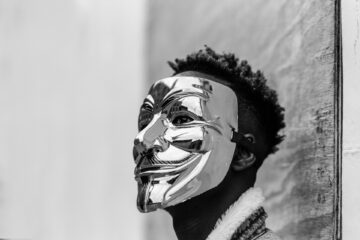![]()
Introduction:
Gandhi’s non-violent methods and passive resistance along with mass mobilization have been explored at length by historians and political analysts. It has aroused feelings of complete devotion to the man and his methods, as also disappointment and resentment of perceived damage to India’s social and moral evolution and enterprise. This essay seeks to explore the Non-cooperation movement (1920-22) and examine its implementation and intent in the context of Gandhi’s philosophy and political strategy.
The non-cooperation movement was a unique one in the accounts of the Indian freedom movement. From January 1921, it began to grow popular and become extremely successful across the country. Bipin Chandra, in his book, “India’s Struggle for Independence”, gives a brief outline of Gandhi’s work in South Africa to set the context in understanding Gandhi as the “man who was about to take over the reins of the Indian National Movement and guide its destinies” [1].
Critical Analysis
Gandhi launched the movement as a perfect blend of all that he thought a national movement must encompass: demand for self-government along with an awakening of the Indian masses. Gandhi made it mandatory for the movement to eschew any act of violence. While the Congress accepted this, the scope and details of the program were largely Gandhi’s doing. He supported the Khilafat movement, backing the “militant”[2] Ali brothers. In Romain Rolland’s diary, he writes about Gandhi’s decision to back the Ali brothers in the Khilafat struggle, despite their “dubious” background.
The contrast between political strategy and ideology is also reflected in this diary entry when Rolland also mentions that “It is noteworthy that Gandhi declares he would not give his daughter in marriage to a Muslim for anything in the world”[3]. However, in a book published later in 1924, Rolland says that in saying that Hindu-Muslim marriage may be premature in the given times, he shows “his sense of realities”.[4]
Political strategy thus seemed to have won over personal ideology. However, the act of giving credence to political strategy by forsaking personal philosophy is not always noticed in his actions. Gandhi’s reactions to the Chauri-Chaura incident, discussed later in the essay, are evidence of this. Forging of this rather unusual alliance was viewed with skepticism by some of the Congressmen, like Subhas Chandra Bose who claimed that Gandhi “only wanted more allies to capture the leadership of the Indian National Congress”[5]. The apparent swinging between standing for his principles versus playing for political strategy has been the cause of contemplation for several historians, critics, and followers.
Gandhi’s article in ‘Young India’, states that, “A full grasp of the conditions of successful civil resistance is necessary at least on the part of the representatives of the people before we can launch out on an enterprise of such magnitude.”[6]
Undoubtedly the Non-cooperation movement was successful in accelerating the national struggle for independence. It was even adopted by the Congress, giving it “new energy”[7]. It would be accurate to say that the country was caught in a tsunami of action-spurred excitement. The “storm” that had started in 1920 seemed to be brewing with “great intensity” by 1921[8].
Gandhi and the Khilafat brothers, who played crucial roles in the movement, went on a nationwide tour, addressing the citizens of the country and whipping up nationalistic fervor. Noted Indian historian, Sumit Sarkar writes about events in 1921-22 stating that they “very nearly brought the government to its knees”[9]. According to Chandra, “thousands of students” left colleges in the first month itself, to join national schools instead, as part of an “educational boycott”[10].
However, in 1922 the Chauri Chaura incident resulted in the termination of the movement. In response to policemen opening fire on a group of protesters, the procession attacked the police and when the police retreated to the station, they set fire to the building. In all, 22 policemen were killed in the incident. This greatly saddened Gandhi, as this brutality went against all of his principles, resulting in him immediately calling off the movement.
Giving fair credit to Gandhi for the success of the program. Bose was among the thousands of other Indians who were baffled at the sudden calling-off of the movement. It confused several people in the country, especially those in the Congress. But, the “dictator’s decree was followed”[11]. Gandhi however, paid “the ultimate political price for his choice to honor his principles”[12] by calling off the Non-cooperation movement. While Bose’s objections to Gandhi’s ideology and ways of working could have led to the use of the word “dictator” to describe Gandhi, one cannot completely ignore the fact that the singular decision by Gandhi to call off the movement was honored even by the Congress, despite their reservations.
There have been several debates about whether the Non-cooperation movement was an ode to Gandhi’s agenda for recognition as a “champion of the toiling masses” and that the Chauri-Chaura incident was a “romantic allusion” to Gandhi’s “idyllic picture of an unadulterated Indian peasantry”[13]. Congress leaders like Motilal Nehru, C. R. Das, Jawaharlal, and others have shown their bafflement upon hearing the news. They did not fathom why the country had to “pay the price for the crazy behavior of some people”[14]. This inability to understand Gandhi’s decisions may have been due to hasty assumptions and conjectures probably driven by excitement at the novelty of this program.
An interesting point to note here is with regard to the Delhi incident in March 1919. The Delhi police heaped allegations of aggression and violence on some satyagrahis at the Railway station. Gandhi took cognizance of this and counseled the satyagrahis about “steeling their hearts and going on with the struggle”[15].
Following this, in November 1921, satyagrahis indulged in violence and hooliganism in Bombay. Gandhi went on a fast as a penance, though he broke it after 4 days after being convinced by his followers. He said, “I am breaking my fast upon the strength of your assurances……if disturbances break out again and if, as a result, they find me driven to a still severer ordeal, they must not be surprised or troubled.”[16]. This clear warning is reflective of Gandhi’s adherence to how the struggle was meant to be conducted.
The Chauri-Chaura incident seemed to be the final straw that culminated in the calling-off of the program completely. “Whether it disclosed the depth of his ethical convictions or simply reflected a more sober political calculation”[17]. Gandhi’s actions did not, then, yield any immediate political “results”. As George Orwell says, “In judging a man like Gandhi one seems instinctively to apply high standards, so that some of his virtues have passed almost unnoticed.”[18].
A common aspect in his mass movements is a Gandhian strategy, described by Bipin Chandra as “Struggle-Truce-Struggle (S-T-S)” which are alternating phases “during which confrontation is withdrawn”[19]. This “strategy” is seen in the Chauri Chaura incident, when Gandhi called off the Non-cooperation movement. Bose says that “To sound the order of retreat just when public enthusiasm was reaching the boiling-point was nothing short of a national calamity”[20].
This could imply that Gandhi’s decisions to retreat might not have always been strategic, but could also have been in response to certain situations that he found himself in. In the case of Chauri Chaura, the fact that the civilians acted against the policemen, without Gandhi’s consent and completely against his principles, was the trigger that caused him to immediately employ the “Truce” phase of his strategy.
Bipin Chandra’s book seems to suggest that the pull-outs were strategic considerations “rather than the result of either Raj initiative or interest loyalties not subsumed under the Congress umbrella”, and all other players in this event: the peasants, businessmen, middle-class educated Indians, were all relegated to the position of “participants in a grand populist movement under the leadership of Gandhi”[21]. Gandhi’s “expectations” of what he desired from the mass movements have been a cause for confusion. Bose mentions that he was “unable to understand” if Gandhi “did not want to give out all his secrets” or if “he did not have a clear conception” of what tactics to use.
Conclusion
Rinku Sen in her book, “Stir It Up: Lessons in Community Organizing and Advocacy” talks about the dilemmas facing community leaders when strategizing to bring about social change. She says “winnability is of primary importance in choosing issues”[22]. Thus, the success criteria that Gandhi chose to infuse into his philosophy and strategize them accordingly would undoubtedly need to be flexible enough to adapt to changing needs and the executors of the program. While he could control the strategy, he did not always have the reins of control over the behavior of the people.
The way to rein them in may have been by pulling down the program that had been painstakingly built. In doing this, Gandhi certainly did not feel remorse, nor a sense of hopelessness. Every time one was pulled down, there was time he took to rework his ideas and put forth a newer and stronger program. Where the Non-cooperation ended and Gandhi was sent to jail, he resurrected the program and launched the Salt Satyagraha and the Civil Disobedience Movement. When that ended he launched the fierce Quit India Movement that ultimately resulted in independence for India from British rule.
References:
[1] Chandra, B. (2016). India’s struggle for independence. Gurgaon, Haryana: Penguin Books.
[2] Dutt, R. P. (2007). India to-day. New Delhi, NCT: People’s Pub. House.
[3] Rolland, R. (2017). Romain Rolland and Gandhi Correspondence. New Delhi, NCT: Publications Division, Ministry of Information and Broadcasting, Government of India.
[4] Rolland, R. (2017). Romain Rolland and Gandhi Correspondence. New Delhi, NCT: Publications Division, Ministry of Information and Broadcasting, Government of India.
[5] Bose, S. C. (1997). The Indian struggle 1920-1942. Calcutta, West Bengal: Netaji Research Bureau.
[6] Gandhi, M. (1999). Collected Works of Mahatma Gandhi: Volume 24. Retrieved from https://www.gandhiashramsevagram.org/gandhi-literature/mahatma-gandhi-collected-works-volume-24.pdf
[7] Chandra, B. (2016). India’s struggle for independence. Gurgaon, Haryana: Penguin Books.
[8] Bose, S. C. (1997). The Indian struggle 1920-1942. Calcutta, West Bengal: Netaji Research Bureau.
[9] Sarkar, S. (2005). Modern India: 1885-1947. New Delhi, NCT: Macmillan.
[10] Chandra, B. (2016). India’s struggle for independence. Gurgaon, Haryana: Penguin Books.
[11] Bose, S. C. (1997). The Indian struggle 1920-1942. Calcutta, West Bengal: Netaji Research Bureau.
[12] Steger, M. B. (2000). Gandhi’s dilemma: Nonviolent principles and nationalist power. New York City, New York: St. Martin’s Press.
[13] Steger, M. B. (2000). Gandhi’s dilemma: Nonviolent principles and nationalist power. New York City, New York: St. Martin’s Press.
[14] Chandra, B. (2016). India’s struggle for independence. Gurgaon, Haryana: Penguin Books.
[15] Gandhi, M. (1922). Speeches and writings of M.K. Gandhi. Authorised up-to-date and comprehensive collection. Madras, Tamil Nadu: G.A. Natesan.
[16] Gandhi, M. (1999). Collected Works of Mahatma Gandhi: Volume 24. Retrieved from https://www.gandhiashramsevagram.org/gandhi-literature/mahatma-gandhi-collected-works-volume-24.pdf
[17] Steger, M. B. (2000). Gandhi’s dilemma: Nonviolent principles and nationalist power. New York City, New York: St. Martin’s Press.
[18] Dag, O. (2019). George Orwell. Retrieved from http://www.orwell.ru/library/reviews/gandhi/english/e_gandhi
[19] Chandra, B. (2016). India’s struggle for independence. Gurgaon, Haryana: Penguin Books.
[20] Bose, S. C. (1997). The Indian struggle 1920-1942. Calcutta, West Bengal: Netaji Research Bureau.
[21] Israel, M. (1991). Pacific Affairs, 64(2), 272-274. doi:10.2307/2759990
[22] Sen, R. (2003). Stir it up: Lessons in community organizing and advocacy. San Francisco, California: Jossey-Bass.



0 Comments